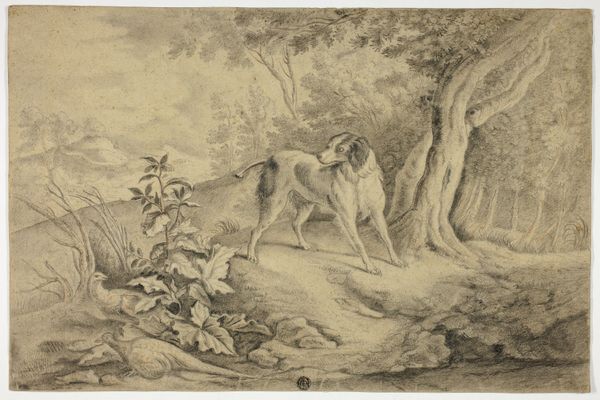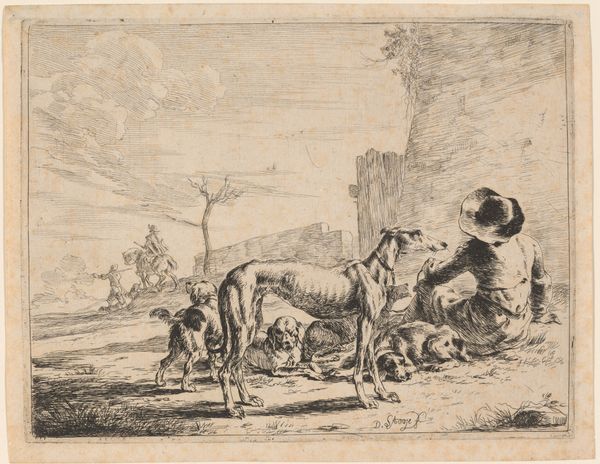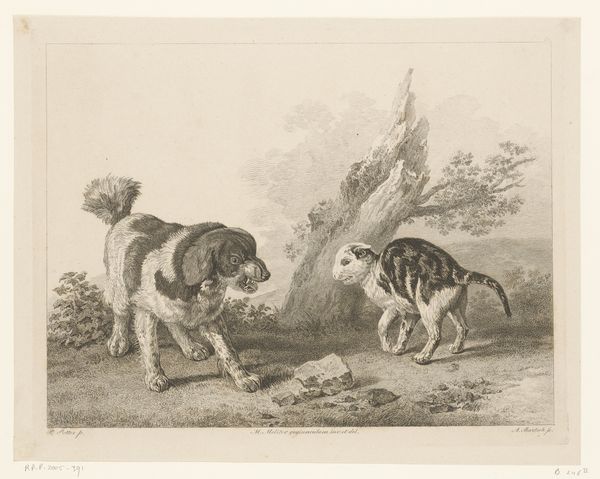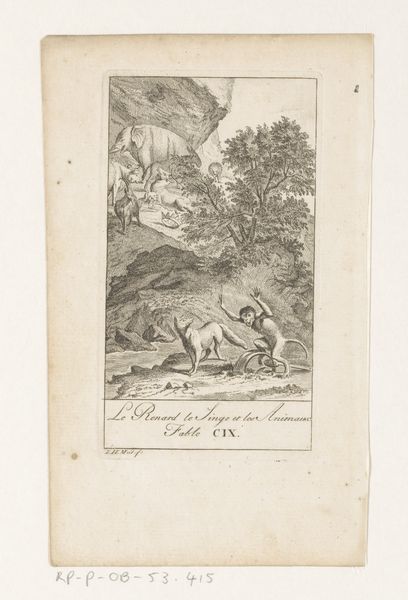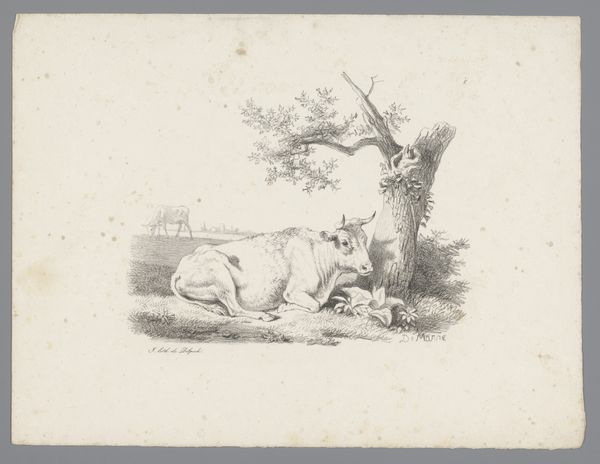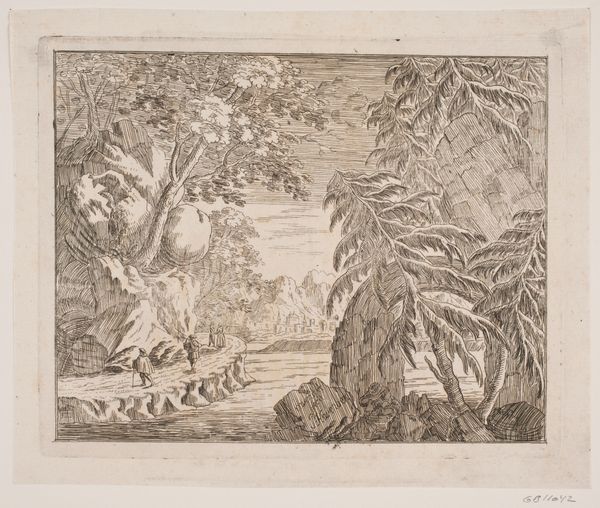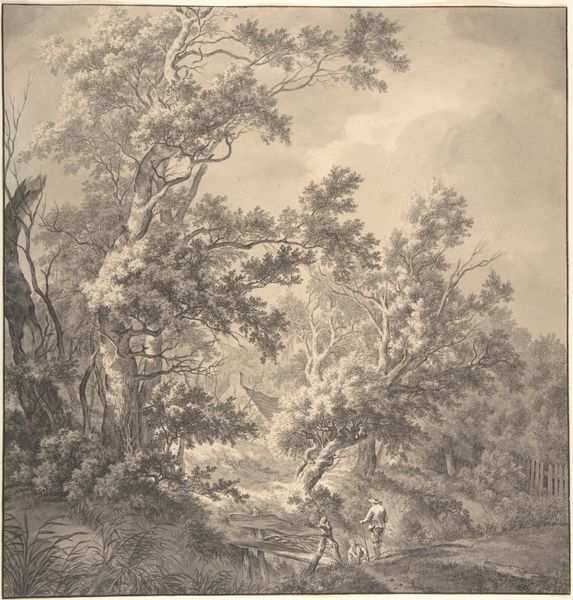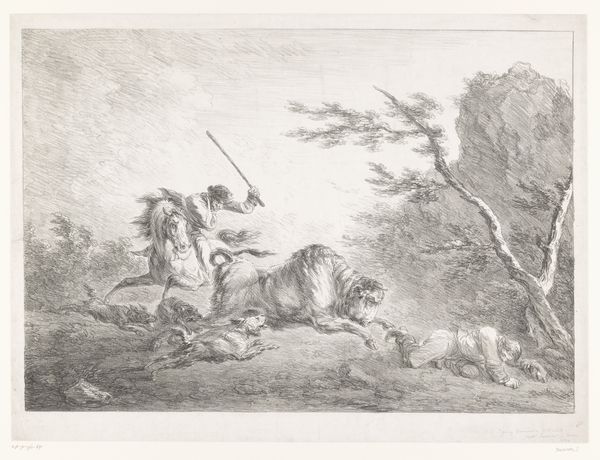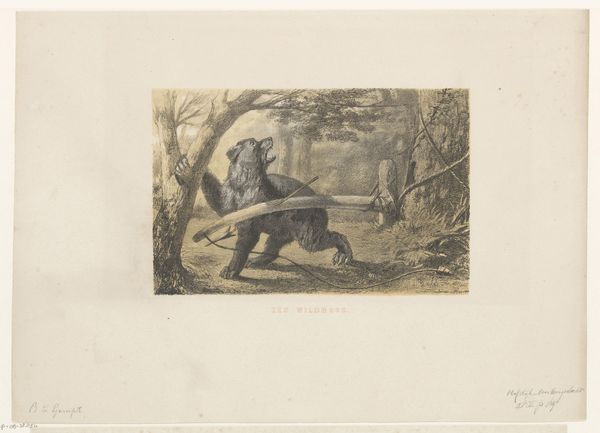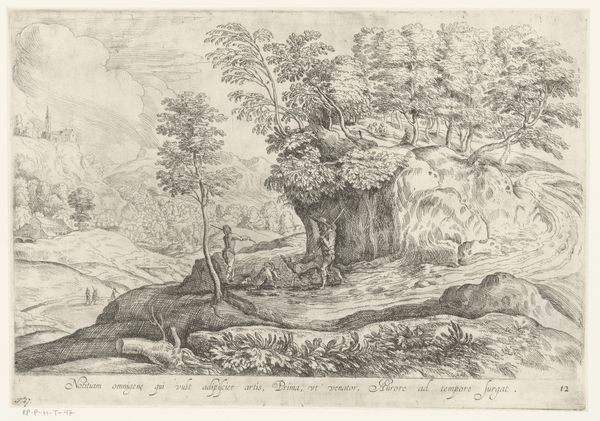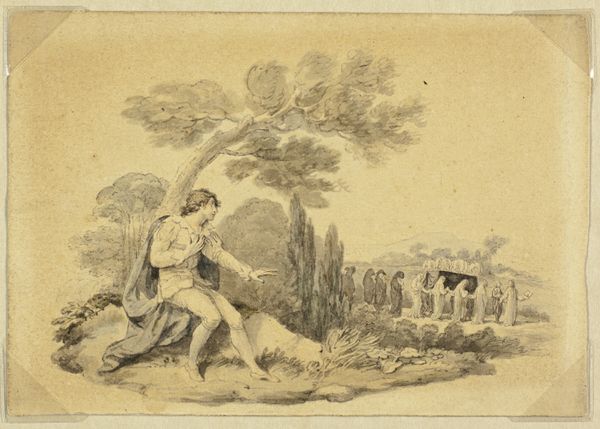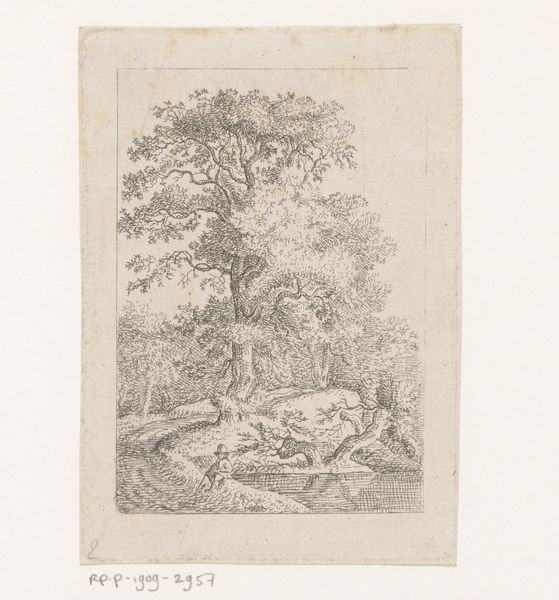
drawing, gouache, paper, ink, pencil, charcoal
#
drawing
#
baroque
#
gouache
#
landscape
#
charcoal drawing
#
paper
#
ink
#
pencil drawing
#
pencil
#
genre-painting
#
charcoal
Copyright: Public Domain
Editor: Here we have Johann Elias Ridinger's "Vorsteherhund auf Rebhühner," created around 1758 using ink, gouache, and charcoal on paper. It’s quite a muted drawing; the colors are all so close. What social context informed a scene like this? Curator: This image is deceptively simple. It’s easy to see it as just a depiction of a hunting dog, but think about the broader social implications. Hunting in the 18th century was heavily regulated, tied to land ownership and aristocratic privilege. The depiction normalizes a hierarchy. How does this connect with our contemporary moment where debates about land rights, access to nature, and even the ethics of hunting are constantly being questioned? Editor: I hadn’t thought about the link to land ownership. So, by extension, is the dog representing power? Curator: Exactly! It symbolizes control over the natural world, a visual reinforcement of social status. Consider the way the artist carefully renders the dog's posture; its focused gaze communicates its training, its subservience, even. Do you think that creates a sense of empathy for the animal or further emphasizes it as a tool of the elite? Editor: I initially felt a sense of the dog’s intensity, but knowing that it's representing power, I’m less sympathetic. Curator: Right. And what does this imply for the birds in the image, framed as nothing more than potential prey? Doesn't this spark important conversations about environmental ethics and the exploitation of natural resources, mirroring our current ecological concerns? Editor: I see how the artwork presents more complex themes than I initially recognised. Thank you for revealing the socio-political context within what I thought was merely a pastoral scene. Curator: It is vital we recognize the embedded cultural and political messages communicated through art. It provides the perfect lens to view the past as we consider a path to the future.
Comments
No comments
Be the first to comment and join the conversation on the ultimate creative platform.
